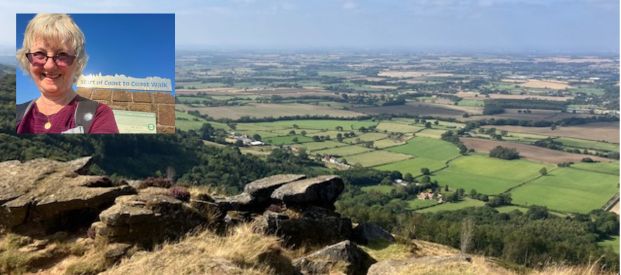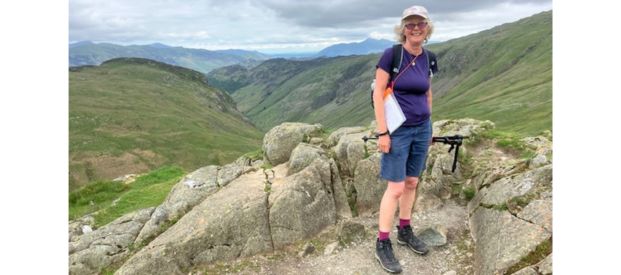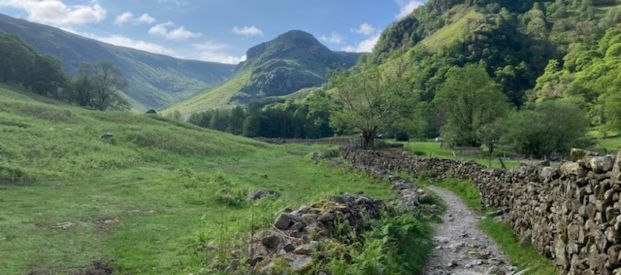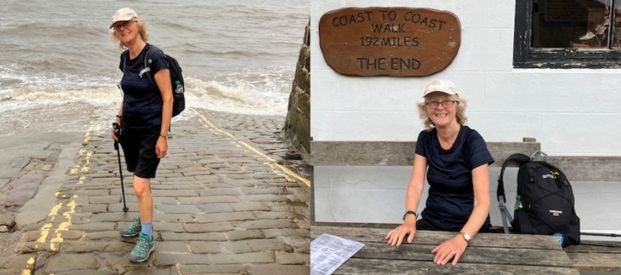The Coast to Coast Walk and Britain’s National Trails
Written by fourth generation family member Alison Hilton
Extending 192 miles from the rugged coastal cliffs of the Irish Sea at St Bees in Cumbria to Robin Hood’s Bay on North Yorkshire’s picturesque east coast, the Coast to Coast Walk is a legendary hike that attracts walkers from all over the world. This famous long-distance trail, conceived by Alfred Wainwright, passes through three National Parks, scenic villages and diverse landscapes, offering a rich variety of experiences for those who set off on this epic walk.
I decided to do this walk for the first time in 2016, as my late father, Richard Rose, an intrepid walker, had completed it some years earlier. I enjoyed the trail so much that I did the walk again in 2019. And this year, 2024, I did it once again. This time I split the route into two halves, completing one in May and one in late August-early September.
Once again, it was a solo walk for me – I enjoyed walking at my own pace and being able to stop wherever I wanted. I met many other walkers both in the day and in the evening at the B&Bs, pubs and hotels where I stayed. The camaraderie of this walk is incredible – it is popular with people from all over the globe and I met people from the USA, Canada, Australia, South Africa, Germany, Netherlands as well as lots of British walkers.
The trail first passes through the spectacular landscape of the Lake District National Park, ascending Dent Fell, then skirting around the shores of Ennerdale Water and Haweswater, and going close to Buttermere, Grasmere and Ullswater. The next National Park it crosses is the Yorkshire Dales, whose varied scenery includes Swaledale with its hay meadows, mining moorlands and stone villages. After crossing the flat, tranquil arable countryside of the Vale of Mowbray, the Coast to Coast traverses the beautiful North York Moors, which were resplendent in pink and purple heather when I was there. It shares the same path as the Cleveland Way, another National Trail for a day or two, finally reaching the North Sea at the picturesque fishing port of Robin Hood’s Bay.
As is customary, I carried a pebble from St Bees beach on the Irish Sea and threw it into the North Sea on the slipway of Robin Hood’s Bay at the end of the walk. It is also a tradition to dip your boots into the sea at the start and end of the walk – many walkers celebrate at the end with a full paddle-immersion of their boots. Of course, a drink at the Bay Hotel at the end of the walk is also a must when you finish.
Created by the ingenious Alfred Wainwright in the 1970s, linking together different footpaths and bridleways, the Coast to Coast Path is not yet a National Trail. However, it is currently being upgraded and will get National Trail status in 2025, perhaps a final recognition of the extent of its popularity.
There are 16 National Trails in England and Wales and Scotland has 29 Great Trails. Walkers, cyclists and horse riders can explore some of our most spectacular landscapes, either in a short section of a trail or by walking the whole route.
Well waymarked with the characteristic acorn symbol, they adhere to the same standards set by the government and are maintained by National Trail officers and volunteers. The longest is the South West Coast Path, 630 miles long, which navigates the undulating coastline of Somerset, Devon, Cornwall and Dorset. The oldest and probably the toughest is the Pennine Way, a 268-mile route starting in the Peak District and going northwards along the Pennines, known as the backbone of England, finally reaching the Scottish Borders.
Shorter trails include the 87-mile-long Ridgeway Path, believed to be Britain’s oldest road, dating from prehistoric times, stretching from Wiltshire to Buckinghamshire and the 85-mile Hadrian’s Wall Path – another walk from coast to coast through Cumbria and Northumberland, which follows the famous defensive wall built by Roman Emperor Hadrian.
I recommend anyone to head out and explore one of the trails – so why not start planning your adventure now?













